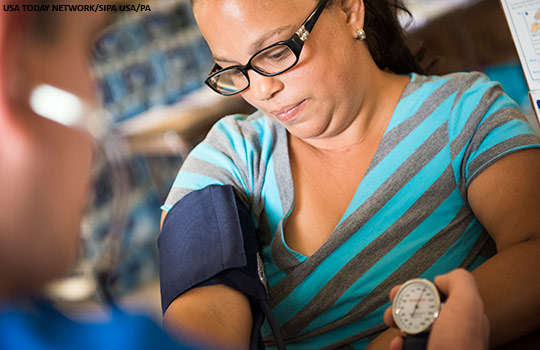We need to find ways to care for all of those at risk, not just those who have the ability to seek care
 After the release of the American College of Cardiology/American Heart Association (ACC/AHA) hypertension guideline, there has been much discussion in the lay and medical literature about the lower thresholds being recommended for the diagnosis of hypertension. Indeed, my own specialty society (the American Academy of Family Physicians) announced recently that they are not endorsing the new guideline because, in part, “the bulk of the guideline wasn’t based on a systematic evidence review.”
After the release of the American College of Cardiology/American Heart Association (ACC/AHA) hypertension guideline, there has been much discussion in the lay and medical literature about the lower thresholds being recommended for the diagnosis of hypertension. Indeed, my own specialty society (the American Academy of Family Physicians) announced recently that they are not endorsing the new guideline because, in part, “the bulk of the guideline wasn’t based on a systematic evidence review.”
The fact that the new guideline “would lead to 46% of the US adult population being categorised as having hypertension” is quite significant. It is one thing to argue that people with lower blood pressure live longer and have better cardiovascular health; it is an entirely different thing to demonstrate that lowering blood pressure to lower levels vs higher levels leads to improved outcomes. Indeed, a very recent Cochrane review investigated this question, and found that there is inadequate evidence to identify whether a lower vs higher blood pressure target is better for older adults with high blood pressure.
While wading through the recent blood pressure controversy to arrive at my own thoughts on the ACC/AHA guideline, my attention was drawn to a posting from HIFA regarding recent findings from the World Health Organization and World Bank that “more than 1 billion people live with uncontrolled hypertension.”
The concept of the “inverse care law” has been discussed for over 40 years—specifically, the problem that the “availability of good medical care tends to vary inversely with the need for it in the population served.”
When confronting the challenges of dealing with hypertension as a global health problem, we need to be clear on our goals, our desired outcomes, and our evidence. If our goal is to care well for all of those at risk of cardiovascular disease, then we need to carefully assess the full extent of the population at risk, and we need to thoughtfully consider what we do and do not know about what makes a difference.
The arguments presented in the ACC/AHA guideline certainly seem plausible—that lower blood pressure is better—and it may be that working harder and harder to treat those who receive care to attain lower blood pressure may make a difference. Yet according to the Cochrane review, we do not have an unequivocal answer to that.
However, we do know that there are many people worldwide who are at risk from their untreated high blood pressure, and they have no ready access to any care—thus, they will never stand to benefit to any degree from the level of control proposed in the recent guidelines.
The problems of overdiagnosis and global population health are intricately related. We need to develop solid evidence as to what does and does not work for those at risk, and we need to find ways to care for all of those at risk, not just those who have the ability to seek care.
William E Cayley Jr is a clinical professor at the University of Wisconsin, Department of Family Medicine and Community Health.
Competing interests: I declare that I have read and understood BMJ policy on declaration of interests and I have no relevant interests to declare.
